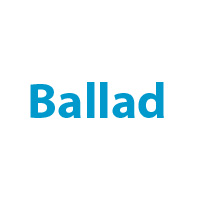What is Ballad?
The ballad is probably the simplest form of narrative poem which tells a story in simple and colloquial language. The principal function of a narrative poem is to narrate what has actually happened, that is historical incidents, myths and legends. So ballad is, in a greater respect, short story in verse.

Ballad is a song or a poem and its original version is composed by a single author. But he is unknown. A popular ballad exists in many various forms. It differs from heroic poems or epics being shorter and having few characters.
The subject matter of ballad is usually tragic and often violent. The story is told through dialogue and action, with sudden transitions from point to point in the narrative. The popular ballad is dramatic and impersonal. It is told without expressing his personal attitudes and feelings. Old favourite subject of ballad is sex and violence. Popular ballads are still being sung and collected usually with a tape recorder in England and remote rural areas of America.
Simply ballads are divided in various forms. A broadside ballad is printed on one side of single sheet, dealing with current events or issues and sung to a well known tune. A literary ballad is a narrative poem written by learned poet in deliberate imitation of the form and spirit of the popular ballad.
The old English ballads include some of the best and most exiting poetry in the language. They were the part of the pub culture of their time. They have a strange poetic quality of their own. They were produced continually in English from Anglo Saxon times. Actually the popular ballads are the most interesting and significant of all the works of the Norman period.
Ballad is the oldest form of English poetry. However this form of poetry represents one of the earlier stages in the evolution of poetic art. As a matter of fact, every literature has ballads and English literature is pregnant with traditional ballads. The folk ballads were composed anonymously and handed down generation to generation orally. For centuries the ballads were the only literature. It was the composition of people and for the people so that it was really democratic institution. It was meant for illiterate people, and the language is simple homely and racy.
The Robin Hood ballads were most popular in England. There are still the popular means of entertainment to the children. In any case, ballad composers cannot be compared with Shelley, Browning, T.S Eliot or other sophisticated poets of the modern age. But then, the ballads have strange poetic quality of their own.
In most ballads, we find a four-line stanza with a simple abcb rhyme scheme and regular metrical pattern: usually the first and third lines are in iambic tetrameter and the second and forth one in iambic trimeter.
In ballad the story is presented simply and chronologically with each stanza repeating the previous one and adding another new piece to the narrative stand. Dialogue is frequently used to forward the action.
The question of authorship of ballad has provoked lively debate. The author may be a single or a group. It is more likely that a ballad was created by one person, but in its oral transmission from place to place and person to person each new singer added to, subtracted from, or rearranged the original material.
The traditional ballad has had immense influence on the form and style of lyric poetry in general; in addition to engendering the ‘literary ballad’ which is a narrative poem written in deliberate imitation of the form, language and spirit of the traditional ballad. In England some of the greatest literary ballads were composed in the Romantic period. Coleridge’s “Rime of the Ancient Mariner” and Keats “Le Belle Dame Sans Merci” are its examples. The title of Keats ballad means “The Beautiful Lady without Pity”. It is a sad story of unfulfilled love that is told in this poem. The central character is a wandering knight who is bewitched by a mysterious lady. Wordsworth and Coleridge collaborated in the publication of “Lyrical Ballads” in 1798.
Published on 23 Jan. 2014 by Kedar Nath Sharma
